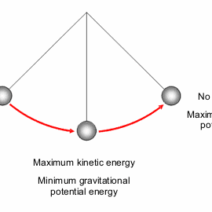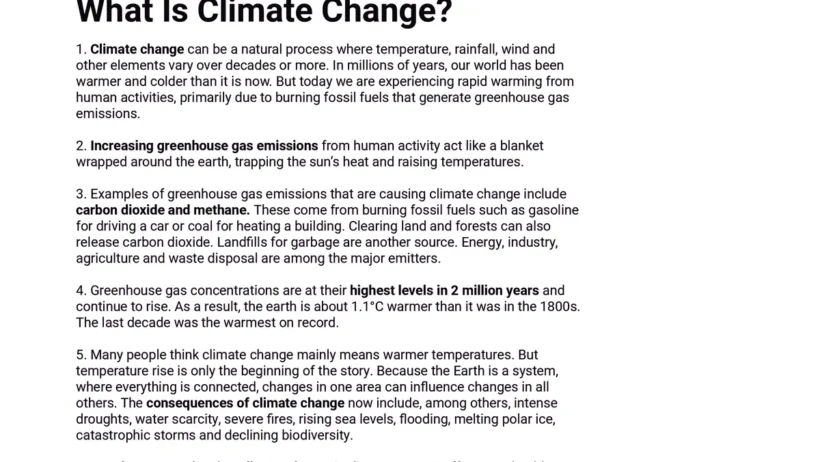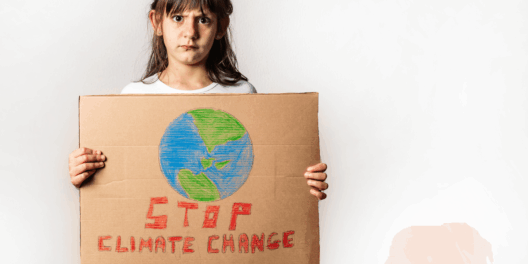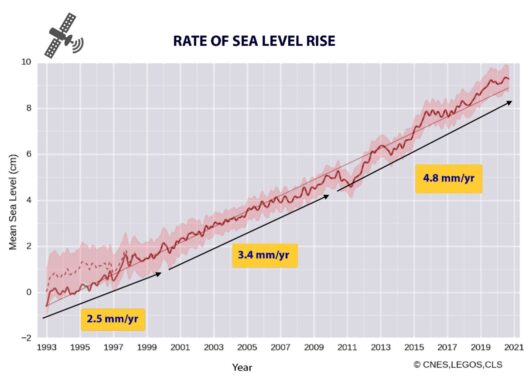The term “climate change” is omnipresent in contemporary discourse, appearing in everything from policy discussions to casual conversations. But what does it truly encompass? At its core, climate change refers to significant alterations in temperature, precipitation patterns, and other atmospheric conditions over extended periods. Perhaps we should start with a playful thought: what if our planet had a mood ring? Would it glow a fiery red as temperatures surged or a tranquil blue during periods of stability? This whimsical notion invites us to delve deeper into the nuances of climate change and explore not just the ‘what,’ but also the ‘why’ and ‘how.’ Now, let’s explore the multifaceted nature of this pressing issue.
Understanding the Science Behind Climate Change
To truly grasp climate change, one must first understand its underlying scientific principles. At its essence, climate change is driven by human activities that release greenhouse gases (GHGs) into the atmosphere. These gases, such as carbon dioxide, methane, and nitrous oxide, trap heat from the sun, leading to a gradual increase in Earth’s average surface temperature—a phenomenon aptly dubbed the greenhouse effect. The burning of fossil fuels, deforestation, and industrial processes are predominant sources of these emissions.
It is crucial to recognize that climate change is not a mere fluctuation in weather. While weather refers to short-term atmospheric conditions, climate reflects trends and averages over longer timescales, typically 30 years or more. Over this period, patterns can shift dramatically, influencing ecosystems, human health, and global economies.
This shift is evidenced by increased frequency and severity of extreme weather events, rising sea levels, and the loss of biodiversity. Regions that have historically enjoyed temperate climates may now suffer from unrelenting heat waves or torrential downpours. Disturbingly, some scientists assert that we are at a tipping point, where specific feedback loops—such as melting polar ice reducing the Earth’s reflective capacity—could exacerbate these changes exponentially.
The Societal Implications of Climate Change
Now that we have unpacked the scientific underpinnings of climate change, it’s essential to approach its social ramifications. How do rising temperatures and shifting climates affect human societies? The reality is quite staggering. As climates progress towards extremes, the effects are felt across diverse sectors including agriculture, health, water resources, and migration.
Agriculture, for instance, suffers because variable weather patterns can drastically impact crop yields. Droughts can devastate harvests, while excessive rainfall can lead to localized flooding, destroying farmland and displacing communities. Farmers may react by altering their practices, such as shifting planting seasons or choosing more resilient crop varieties, but these adaptive measures often entail costs, both economically and psychologically.
Health, too, is impacted by climate change. Heatwaves pose direct risks, causing heat-related illnesses. Furthermore, as ecosystems shift, diseases like malaria and dengue fever can spread to new territories, endangering populations unaccustomed to such health threats. The mental toll of navigating an increasingly unpredictable world can lead to anxiety and stress, creating a new facet of public health challenges.
Furthermore, water resources are being stretched thin as glaciers—once reliable sources of freshwater—shrink due to rising temperatures. Regions that are already arid see their water supplies dwindle, leading to competition and conflict. In a world where water is life, the depletion of this resource can lead directly to strife among communities.
As factors such as these coalesce, we witness a phenomenon where entire populations may need to relocate in search of habitable land. This migration, often termed “climate refugees,” raises pressing legal and ethical questions about how nations will respond to displaced individuals and communities. As the saying goes, “What one does to a tree, they do to a child.” If climate change uproots lives, what moral obligation do societies have to those affected?
Confronting Climate Change: A Collective Challenge
Now that we have a better understanding of climate change’s complexities, let’s consider the collective effort required to combat this existential threat. Governments, corporations, and individuals all play pivotal roles. Legislation aimed at reducing greenhouse gas emissions, such as the Paris Agreement, serves as a broad framework for nations to unite in fighting climate change. However, successful implementation depends on political will and public support.
Corporations must reevaluate their impact on the environment and consider sustainable practices that fortify resilience to climate change. From converting to renewable energy sources to embedding sustainability into their supply chains, the business sector has the capacity to drive significant change.
On an individual level, every small action counts—from reducing energy consumption to supporting local economies. Perhaps a playful question we should all ask ourselves is: “Are we adding to the problem or becoming part of the solution?” As we grapple with our roles in this global challenge, we can forge a path toward a sustainable future.
In conclusion, climate change is not a distant phenomenon; it is occurring here and now, affecting every aspect of life on Earth. Its definition encompasses a web of interconnected factors that call for concerted action across all sectors. By understanding the science, acknowledging the societal implications, and confronting the challenge together, we can begin to elucidate practical steps towards mitigating climate change. Perhaps now, more than ever, the time for action is not just crucial, but imperative.








